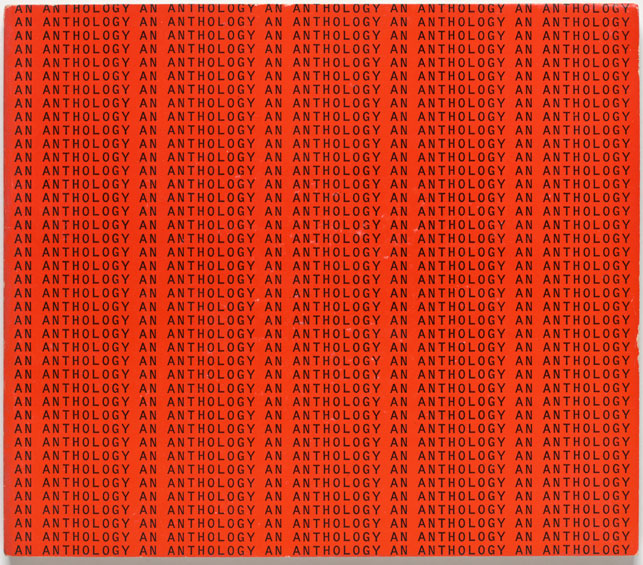LEF, 1-7 (1923-25), & Novyi LEF, 1-24 (1927-29) [Russian, English]
Filed under magazine | Tags: · 1920s, art, art criticism, art theory, avant-garde, constructivism, factography, film, film theory, futurism, left, literature, poetry, productivism, revolution, russia, soviet union

LEF (“ЛЕФ”) was the journal of the Left Front of the Arts (“Левый фронт искусств” – “Levy Front Iskusstv”), a widely ranging association of avant-garde writers, photographers, critics and designers in the Soviet Union. It had two runs, one from 1923 to 1925 as LEF, and later from 1927 to 1929 as Novyi LEF (‘New LEF’). The journal’s objective, as set out in one of its first issues, was to “re-examine the ideology and practices of so-called leftist art, and to abandon individualism to increase art’s value for developing communism.”
Although LEF was catholic in its choices of writers, it broadly reflected the concerns of the Productivist left-wing of Constructivism. The editors were Osip Brik and Vladimir Mayakovsky: fittingly, one a Russian Formalist critic and one a poet and designer who helped compose the 1912 manifesto of Russian Futurists entitled, “A Slap in the Face of Public Taste”. The covers were designed by Alexander Rodchenko, and featured photomontages early on, being followed by photographs in New LEF. Among the writings published in LEF for the first time were Mayakovsky’s long poem About This, and Sergei Eisenstein’s The Montage of Attractions, as well as more political and journalistic works like Isaac Babel’s Red Cavalry. The journal had funding from the state, and was discussed critically, but not unsympathetically by Leon Trotsky in Literature and Revolution (1924).
The later New LEF (“Новый ЛЕФ” – “Novyi Lef”), which was edited by Mayakovsky along with the playwright, screenplay writer and photographer Sergei Tretyakov, tried to popularise the idea of ‘Factography’: the idea that new technologies such as photography and film should be utilised by the working class for the production of ‘factographic’ works. In this it had a great deal of influence on theorists in the West, especially Walter Benjamin and Bertolt Brecht. Linked journals also appeared such as the Constructivist architectural journal SA (edited by Moisei Ginzburg and Alexander Vesnin) and Proletarskoe Foto, on photography. The New LEF closed in 1929 over a dispute over its direction between Mayakovsky and Tretyakov, and under pressure for its ‘Formalism’, which jarred with the incipient Socialist Realism. (from Wikipedia)
LEF, 1-7 (ZIP; updated on 2012-7-19)
Novyi LEF, 1-24 (ZIP; updated on 2012-7-19)
All issues in PDF (added on 2015-7-21)
All issues in HTML (added on 2015-8-11)
English translations of selected essays (trans., ed. & intro. Richard Sherwood (LEF) and Ben Brewster (Novy LEF), Screen 12(4), Winter 1971-72; added on 2015-7-21)
De Stijl magazine (1917-1921) [Dutch]
Filed under magazine | Tags: · architecture, art, art criticism, art theory, avant-garde, de stijl, literature, neoplasticism, painting, poetry

De Stijl, Dutch for “The Style”, also known as neoplasticism, was a Dutch artistic movement founded in 1917. In a narrower sense, the term De Stijl is used to refer to a body of work from 1917 to 1931 founded in the Netherlands. De Stijl is also the name of a journal that was published by the Dutch painter, designer, writer, and critic Theo van Doesburg (1883–1931), propagating the group’s theories. Though the magazine never sold more than 300 copies, it had a strong influence on art in the Netherlands and abroad.
De Stijl: Maanblad gewijd aan de moderne beeldende vakken en kultuur
Edited by Theo van Doesburg
Published in Delft (1917-18) and Leiden (1918-21)
La Monte Young, Jackson Mac Law (eds.): An Anthology of Chance Operations (1963)
Filed under artist publishing | Tags: · art, avant-garde, conceptual art, fluxus, music, poetry

A source-book of early Fluxus classics. A collection of scores, poetry, dance constructions, and other avant-garde work. Includes Henry Flynt’s first essay on concept art.
When the poet Chester Anderson, publisher of Beatitude, exited New York for California in 1959, he asked La Monte Young to edit Beatitude East, composed from the performance scores Young had collected in Berkeley and New York. In this he was aided by Jackson Mac Low, who had attended Cage’s composition course at the New School for Social Research and worked at the Living Theater with Julian Beck and Judith Malina.
Mac Low and Young provided Maciunas with connections to “beat” ideology, encouraging him not only to present radical programming at AG Gallery, but to design An Anthology, and to organize the initial 1962 Fluxus Festival in Wiesbaden, Germany. All of this was contemporaneous.
Maciunas supplied the paper, design and some money for the publishing of An Anthology, according to Henry Flynt, and had it ready for printing by October 1961. It was finally published by Young and Mac Low in 1963 as:
AN ANTHOLOGY of chance operations concept art anti-art indeterminacy improvisation meaningless work natural disasters plans of action stories diagrams Music poetry essays dance constructions mathematics compositions, BY GEORGE BRECHT, CLAUS BREMER, EARLE BROWN, JOSEPH BYRD, JOHN CAGE, DAVID DEGENER, WALTER DE MARIA, HENRY FLYNT, YOKO ONO, DICK HIGGINS, TOSHI ICHIYANAGI, TERRY JENNINGS, DENNIS, DING DONG, RAY JOHNSON, JACKSON MAC LOW, RICHARD MAXFIELD, ROBERT MORRIS, SIMONE MORRIS, NAM JUNE PAIK, TERRY RILEY, DITER ROT, JAMES WARING, EMMETT WILLIAMS, CHRISTIAN WOLFF, LA MONTE YOUNG/LA MONTE YOUNG – EDITOR/GEORGE MACIUNAS – DESIGNER.
The first edition (it was reprinted in 1972 by Hundermark, Germany) contains 67 leaves and three inserts. It includes multicolored and onionskin paper, card stock and two envelopes. The text was printed in offset with a heavy paper cover, collated manually with a staple and perfect binding.
Self-published, New York, Spring 1963
Layout by George Maciunas
120 pages
PDF (36 MB, updated on 2012-7-9)
Comment (1)
